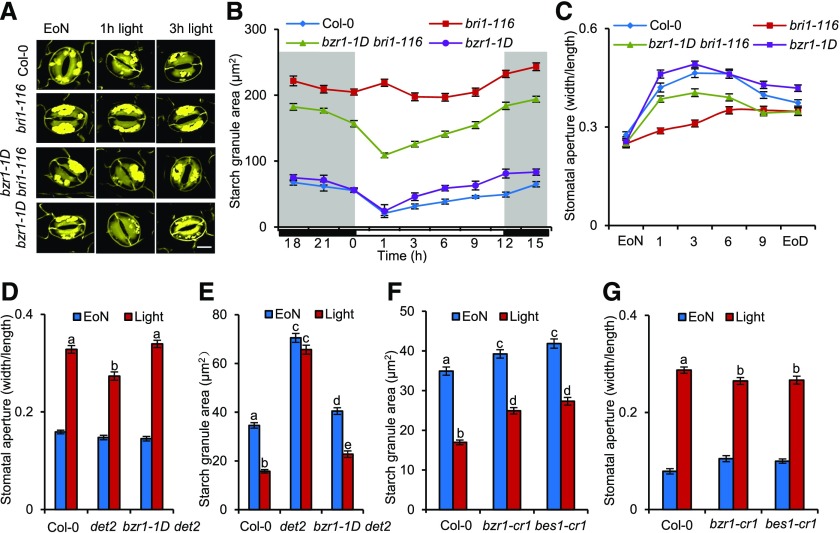Figure 1.
Starch Degradation in Guard Cells Is Required for BR- or BZR1-Mediated Stomatal Opening.
(A) to (C) Dynamic changes of starch granules within guard cells and stomatal apertures in the leaves of the wild-type Col-0, bri1-116, bzr1-1D, and bzr1-1D bri1-116 plants at the indicated time points under 12-h-light/12-h-dark cycles. The cotyledons of 11-d-old seedlings of Col-0 and the indicated mutants were harvested at the indicated time points and immediately fixed in buffer for starch quantification ([A] and [B]) or used to directly measure the stomatal apertures (C). The starch granules in guard cells or the ratio of stomatal aperture width to length from at least 100 guard cells from 10 to 15 leaves of eight different plants were measured using ImageJ software. Three independent biological repeats were performed. Error bars indicate sd (n = 3 biological repeats). Bar = 20 µm. EoD, end of day.
(D) to (G) Quantification of the starch granules and stomatal apertures in guard cells of intact leaves of the wild type and different mutants at the EoN or after 1 h of light illumination. The rosette leaves of 5-week-old Col-0 and different mutants were harvested at the indicated time points and immediately fixed in buffer for starch quantification ([E] and [F]) or fixed using a Tape-Arabidopsis Sandwich method for stomatal aperture measurement ([D] and [G]). The guard cell starch granules or the ratio of stomatal aperture width to length from at least 100 guard cells from 10 to 15 leaves of eight different plants were measured using ImageJ software. Three independent biological repeats were performed. Error bar indicates sd (n = 3 biological repeats). Different letters above bars indicate statistically significant differences between samples (two-way, [E] and [F], or one-way, ([D] and [G]), ANOVA followed by a post hoc Tukey test, P < 0.05).

